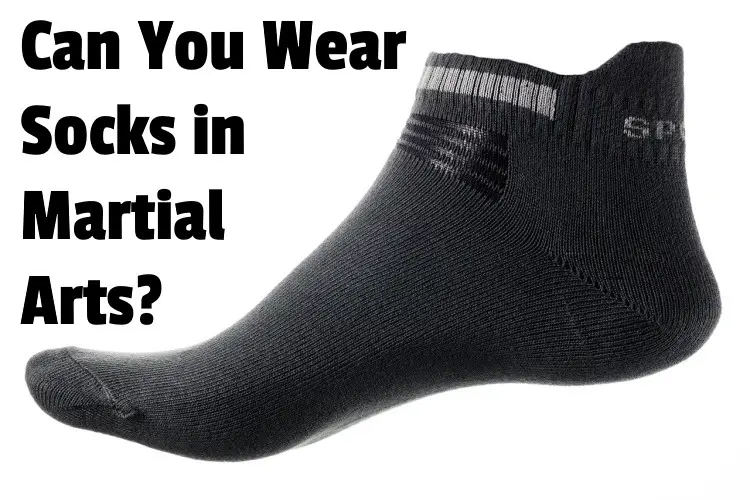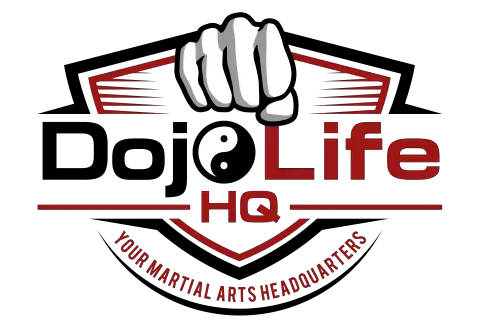
Some martial arts are fought barefoot, while practitioners can wear shoes in some other ones. What’s the deal? Can you wear socks in martial arts?
Here’s what I know based on my experience:
Most martial arts are practiced barefoot. But upon checking with the instructor, many will allow practitioners to wear socks if preferred or medically necessary. However, martial art mats can be slippery when wearing socks, so non-slip socks are best.
Capoeira is often practiced in socks, and Kung Fu practitioners often wear special shoes.
But if you must wear socks, look for compression socks with rubber dots like the kind hospitals give out. These will improve the traction when practicing on the mats.
In this article, we’ll explore issues around the use of footwear in martial arts, why it’s not allowed in most, and some exceptions.
We’ll check out:
- Whether you’ve got to be barefoot to do martial arts
- Some martial arts where you can keep your shoes on
- Why martial artists fight barefoot
- Whether Capoeira is done with socks
- Why MMA fighters fight barefoot
Let the fun begin.
Martial arts have been taught and practiced, #barefoot, for centuries…your feet function better shoeless! pic.twitter.com/LnVMIs29g7
— BarefootInMonterey (@BarefootinMRY) October 27, 2015
Do you have to be barefoot for martial arts?
Practitioners don’t have to be barefoot for martial arts, especially if there is a medical condition that requires the feet to be covered. Simply ask for permission from the instructor. But in general, most martial arts are practiced barefoot.
It’s mainly because of sanitary and practical purposes that most martial artists do not wear shoes or socks when they practice. The cleanliness and hygiene of the training area is the main consideration. It’s also a reflection of Asian culture, especially Japanese and Korean.
In these countries, it’s the norm that one does not wear shoes at home.
It’s impolite to do so. People remove their shoes before entering a house. This is carried over into their self-defense arts.
And, it is easier to have better control over one’s feet when you practice barefoot. The instructor can also see your feet when they are instructing you to perform certain moves. It’s easier to guide you this way.
But there are genuine reasons why it’s ideal that a person doesn’t go barefoot when they’re in a dojo.
If they have an infection in their foot or a related health reason, to protect others, they need to simply ask for permission, and they would be allowed to wear socks or a shoe that’s clean and comfortable.
They may be asked not to wear these when they have to use the restroom, as it is not the most sanitary thing to do. And not all martial arts require that you go barefoot.
Are martial arts all they’re cracked up to be?
Are they worth the hassle? I’m glad you asked. It’s funny, but that’s what I explored in a recent article of mine.
In it, I shared the main benefits of learning martial arts. I explained why it’s vital to learn self-defense and revealed whether martial arts make you violent.
Just click the link to read it on my site.
Who’s back in Kung Fu after two years and feeling it? This guy.
Who went to class without shoes and trained in the his work boots? Also this guy.
I can’t really feel my legs, but it feels good to be back. pic.twitter.com/RQEcyNLS5f
— Jacob Swift (@lacourier71360) January 28, 2020
What martial arts can you wear shoes?
Jeet Kune Do, Kung Fu, Boxing, Wrestling, Savate, and Krav Maga are some of the martial arts where shoes are commonly worn. Unlike martial arts that originated in Japan and Korea, these evolved in cultures where training was traditionally done outdoors.
And where the practice of wearing shoes indoors is not frowned upon. Shoes are also worn in Kali and Sambo.
Kung Fu (an umbrella term for most martial arts that evolved in China) used to be practiced outdoors in ancient times, and shoes have been a part of the requirements even in ancient times.
Of course, the practice is continued even in modern dojos. It’s just that students cannot use their street shoes inside the dojo. They have to take it off and wear shoes specific for training.
Now, it’s not easy to tell Kung Fu and Karate apart, right?
Can you? Not to worry, seeing as a recent article of mine is an exploration of the main differences. In it, I shared 9 differences between both martial arts.
Just click the link to read it on my site.
When training martial arts you should always train barefoot to increase balance. Flexibility ensures you can kick higher and swifter. Bodybuilding mitigates your martial prowess pic.twitter.com/93dllr5wTQ
— Yakub (@yaao2014) May 21, 2020
Why do martial artists fight barefoot?
Most martial artists fight barefoot because it’s the tradition. It’s easier to train muscle and posture when one’s barefoot, as one is unlikely to slip on the slick surface of the training mats.
The key reason is tradition.
Some of the most popular martial arts are Asian imports. As such, they reflect the culture. Asians do not wear shoes indoors. So, it’s normal that one takes off one’s shoes before entering a home.
You then go barefoot or may be provided some indoor slippers. This might seem strange, but it makes sense since dirty shoes are almost always bearers of numerous bacteria.
Another reason many martial artists prefer to train barefoot is that it’s a lot easier to control the feet that way. Shoes protect our feet but may not be easy to control.
They are an extra layer of complexity.
If you’re training with your shoes on, you or the instructor can’t see what’s happening to your feet. But barefoot, it’s obvious, and you can have better control. And the instructor can easily guide you.
Having the right posture is a vital part of most martial arts. When you’re barefoot, you are more directly connected to the ground, and it’s easier to sense your environment.
photo shoot with #junkiesmagazineaustralia rocked our socks! #capoeira #soulscapearts pic.twitter.com/sUqvIWTFNj
— Soulscape Arts (@soulscape_arts) October 2, 2017
Is Capoeira done with socks?
The Brazilian-African martial art Capoeira is often done with socks on. But some variations also practice in non-slip lightweight shoes similar to those used for Pilates.
Capoeira is an art form that originated in Salvador, Brazil, but was really brought there from Africa during the slave trade.
In addition to physical exercises that are physically demanding, there are also elements of dance, music, and even learning how to play musical instruments.
It’s believed that Capoeira was developed by slaves who added these other elements to mask the fact that they were learning how to fight.
And yet, like other martial arts, it’s not about picking up fights, but self-defense, learning to respect and live peacefully with others.
At first glance, it doesn’t seem as if it offers much in terms of self-defense, but it does. It teaches practitioners how to react quickly, dodge blows, and employ brutal kicks with the head, elbow,
What about Aikido?
What can you wear to practice? In a recent article, I shared whether a dojo would give you a uniform. I also shared what it’s called. I even shared a simple guide on how to wear it.
Just click the link to read it on my site.
@MiddleEasy @veromacedomma HUGE HEAD KICK #KO AT #SUFN2 #UKMMA #MMA #Sheffield @dn4photography #photography pic.twitter.com/EqCrPiLqYG
— dn4photography (@dn4photography) October 13, 2014
Why do MMA fighters fight barefoot?
MMA fighters fight barefoot because of the rules in the UFC. Shoes and socks are not allowed. MMA is a combination of many martial arts where most fighters fight barefoot. So, it’s a natural carry-over. Fighting barefoot also allows for fighters to have a better grip on the floor.
An example is the triangle choke.
It’s one of the most effective submissions in MMA. It’s hard to pull off with shoes on because it depends on having a tight grip and control of one’s legs and feet.
While shoes and socks protect the feet, most fighters probably prefer to fight barefoot since they train that way, and it provides better grip and control. It’s easy to slip when you have shoes on.
And some shoes, say those with steel caps, would be dangerous weapons that would lead to unfair advantages and injuries. UFC rules do not allow shoes or any foot padding.
But the “no shoes” rule has not always been a part of the regulation. Before the year 2000, there were fights where shoes were worn.
And, there was a time the UFC had a deal with Reebok and fighters had to wear shoes. The six-year deal was signed in 2014. But some fighters refused to wear Reebok.
Virtually all the fights were fought barefoot.
Conclusion
In the article, we looked at whether you’ve got to be barefoot to do martial arts.
We checked out some martial arts where you can keep your shoes on. Then, we found out why martial artists fight barefoot.
We learned that Capoeira is done with socks on. Lastly, we looked at why MMA fighters fight barefoot.
Image by jan mesaros from Pixabay
